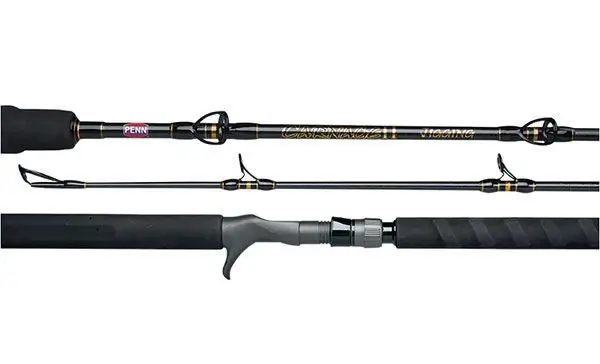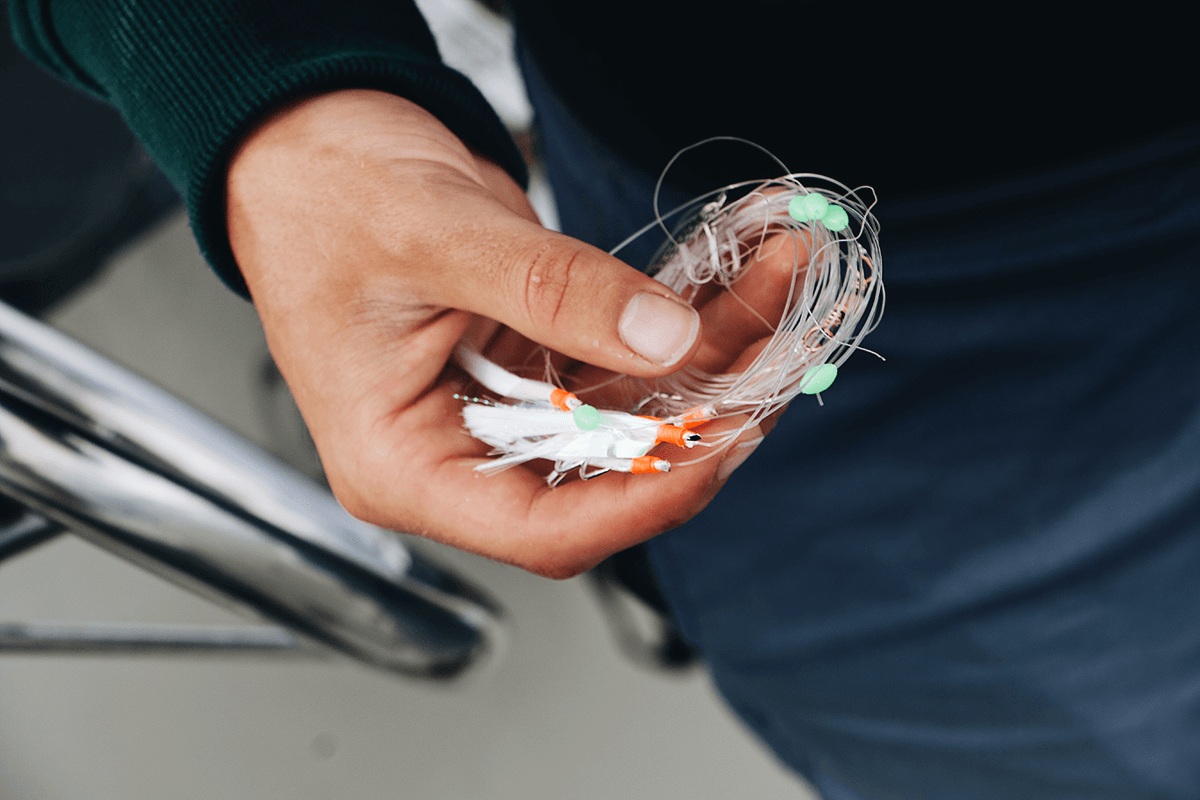As the sun creeps over the horizon, casting its gentle light upon the calm waters, there's nothing quite like the thrill of casting your line into the great unknown, anticipating the exciting battle between angler and fish.
Whether you're a seasoned pro or a complete novice, the draw of fishing lies in its simplicity: man, rod, and reel. But if you’ve ever looked for a reel online or walked into a tackle store, you know selecting a reel can seem anything but simple.
Fear not, fellow angler—we’re about to dive into the world of baitcasting and spinning reels, dissecting their differences, and helping you make an informed decision.
Casting vs Spinning: A Reel-to-Reel Showdown
Casting reels (AKA Baitcasting reels) are often the go-to choice for experienced anglers seeking precision and control in their casts. These reels sit on top of the rod and have a revolving spool, which allows for greater accuracy and line control. They're especially popular among bass fishermen and those targeting larger species.
Spinning reels are mounted underneath the rod and feature a fixed spool. This design makes them beginner-friendly and versatile, as they can be used for a wide variety of fishing techniques. They're commonly used for lighter lines and lures.
When it comes to the type of fishing best suited for each reel, casting reels excel in situations where accuracy and control are key, such as pitching or flipping into tight cover. Spinning reels are better suited for finesse techniques, like drop-shotting, or fishing with light lures.
Pros and Cons of Casting Reels
Baitcasting reels have some significant advantages over their spinning counterparts:
- They offer greater accuracy, as the angler can control the spool's speed during the cast. This allows for precise targeting of specific structures or areas.
- Casting reels also provide more control over the line, giving the angler the ability to manage line tension and prevent the lure from sinking too quickly.
- Casting reels are also better suited for heavier lures than spinning reels, making them the preferred choice when targeting larger fish.
However, baitcasters also have their drawbacks:
- They have a steeper learning curve, requiring practice and patience to master.
- Backlash, or the tangling of the line, can be a common issue, especially for beginners.
- Casting reels are usually more expensive than spinning reels, which may be a deterrent for some anglers.
Pros and Cons of Spinning Reels
Spinning reels offer several advantages, particularly for novice anglers:
- They are easier to use, as the fixed spool design makes casting more intuitive.
- Spinning reels are also highly versatile, suitable for various fishing techniques and species.
- These reels are less prone to tangles, reducing the likelihood of frustrating line mishaps.
Of course, on the flip side, spinning reels do have some downsides:
- They tend to have lower accuracy compared to baitcasting reels, and offer less control over the line.
- They're not ideal for heavy lures, limiting their effectiveness when targeting larger species.
Casting vs Spinning Reels for Saltwater Fishing
When selecting a reel for saltwater fishing, consider factors such as target species, lure size and weight, and fishing techniques.
For heavier lures and larger species, baitcasting reels are often the better choice, as they offer more power and control.
However, spinning reels may be the better option for lighter lures and more finesse-based techniques.
When choosing between baitcasting and spinning reels for saltwater fishing, it’s also important to consider the specific environments in which you'll be fishing. Inshore and offshore fishing each present unique challenges and opportunities that can impact the performance of your reel.
Navigating the Shallows: Which Reel is Better for Inshore Fishing?
Inshore fishing typically involves casting in shallow waters, such as flats, estuaries, and bays. In these environments, you'll often find yourself targeting species like redfish, snook, and spotted seatrout. Due to the structure and cover often found in these areas, accuracy and control become paramount.
Baitcasting reels excel in these situations, as their greater accuracy allows you to place your lure exactly where you want it. Additionally, baitcasters offer more control over the line, which can be beneficial when fishing around docks, mangroves, or other tight spaces.
However, spinning reels shouldn't be overlooked for inshore fishing gear, especially when using lighter lures and more finesse techniques. Their versatility and ease of use make them an excellent option for anglers who prefer to switch between various presentations and tactics throughout the day.
Tackling the Big Blue: Which Reel is Better for Deep Sea Fishing?
Deep sea fishing presents its own set of challenges, as you'll be targeting larger species like tuna, marlin, and mahi. In these situations, power and line capacity become critical factors in your reel selection.
Baitcasting reels, with their ability to handle heavier lures and deliver increased power, are often favored by deep sea anglers. The larger line capacity of many baitcasters also comes in handy when battling hard-fighting pelagic fish that can make long, powerful runs.
On the other hand, spinning reels have their own niche uses in deep sea fishing as well, particularly when using lighter tackle and techniques like vertical jigging or live bait fishing. High-quality spinning reels can provide ample line capacity and drag power to handle these situations, while maintaining the ease of use and versatility that many anglers appreciate.
Note: For the toughest offshore species, there are also electric fishing reels to consider. These have a powerful motor that can help you retrieve your line with less effort. Electric reels excel at helping you fight fish until they're close to the surface.
Baitcasters vs Spinning Reels: Which is Better for Bass Fishing?
Bass fishing uses a wide range of lures, from lightweight finesse presentations to heavier jigs and crankbaits. As such, it's essential to consider the size and weight of the lures you plan to use when choosing between a baitcasting or spinning reel.
Line Weight
Line weight is another critical factor when selecting the ideal reel for bass fishing. Heavier lines are better suited for baitcasting reels, while spinning reels excel when using lighter lines. Consider the type of cover you'll be fishing and the size of the bass you expect to catch when making your decision.
Personal Skill Level
Your skill level as an angler plays a significant role in determining which reel is best for you. If you're a seasoned angler with experience handling baitcasting reels, you may prefer the accuracy and control they offer. Conversely, if you're new to bass fishing or prefer a more straightforward setup, a spinning reel may be the better option.
Recommendations for Bass Fishing
- Casting reels provide greater accuracy and control, making them ideal for pitching and flipping into heavy cover or working larger lures effectively. They're also better suited for handling heavier lines, which can be beneficial when fishing in dense vegetation or around structure.
- Spinning reels are an excellent choice for finesse techniques like drop-shotting or using weightless soft plastics. Their ease of use and versatility make them perfect for anglers who want a reliable and adaptable setup for various bass fishing situations.
Frequently Asked Questions about Casting vs Spinning Reels
Are Casting Reels Better than Spinning Reels for Beginners?
Spinning reels are generally easier for beginners to use than baitcasters, thanks to their more user-friendly design and lower risk of tangles.
Which Reels are Easier to Maintain?
Spinning reels typically require less maintenance, as they have fewer moving parts and a simpler design.
Which Reels are Cheaper to Buy?
Spinning reels are typically more affordable than casting reels, making them a more popular choice for budget-conscious anglers.
Which Reels are More Durable?
Both casting and spinning reels can be durable, depending on the quality of the materials and construction. However, it’s important to note that casting reels can be more susceptible to wear and tear simply due to their more complex design and moving parts.
Which Reels are Less Prone to Tangling?
Spinning reels are generally less prone to tangling, as their fixed spool design reduces the likelihood of line mishaps.
Bottom Line: Which Type of Reel is for You?
To recap: casting and spinning reels each have their unique strengths and weaknesses. Baitcasting reels offer greater accuracy, control, and power, making them ideal for experienced anglers targeting larger fish. Spinning reels are more beginner-friendly, versatile, and less prone to tangles, making them a popular choice for various fishing situations.
Ultimately, the choice between baitcasting and spinning reels comes down to personal preference and the specific needs of your fishing style.
By understanding the key differences—and considering factors such as your experience level, target species, and fishing techniques—you can make an informed decision and choose the reel that’ll serve you best on your angling adventures.








